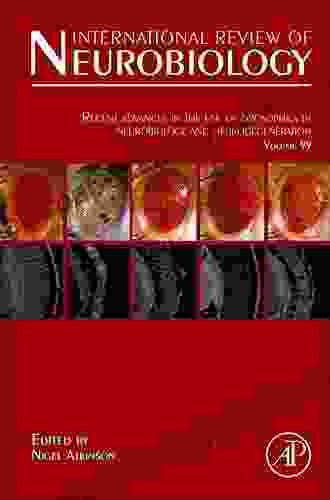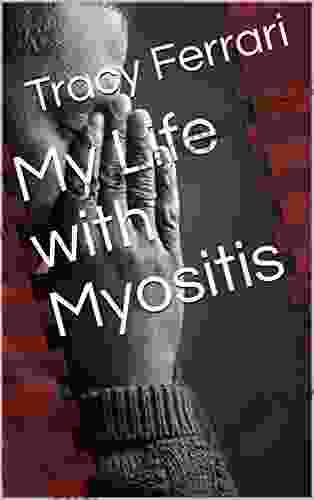Unveiling the Power of Drosophila: Recent Advances in Neurobiology and Neurodegeneration

5 out of 5
| Language | : | English |
| File size | : | 2431 KB |
| Text-to-Speech | : | Enabled |
| Enhanced typesetting | : | Enabled |
| Print length | : | 312 pages |
| Screen Reader | : | Supported |
In the realm of neuroscience, the humble fruit fly, Drosophila melanogaster, has emerged as an indispensable model organism, offering unparalleled insights into the complexities of the nervous system and neurodegenerative disFree Downloads. With its short generation time, ease of genetic manipulation, and conserved molecular and cellular pathways with humans, Drosophila has revolutionized our understanding of neurobiology and opened up new avenues for therapeutic discoveries.
In this article, we delve into the recent advancements made using Drosophila in the field of neurobiology and neurodegeneration. We explore the groundbreaking research that has shed light on fundamental neural processes, such as learning and memory, and unraveled the intricate mechanisms underlying neurodegenerative diseases like Alzheimer's, Parkinson's, and Huntington's. This article provides a comprehensive overview of the latest findings and underscores the enormous potential of Drosophila as a research tool in advancing our knowledge of the nervous system and its disFree Downloads.
Drosophila as a Model for Neurobiology
The fruit fly is an ideal model organism for studying neurobiology due to its several unique advantages. Its well-defined genetic makeup, the availability of powerful genetic tools, and the ability to perform high-throughput screens have accelerated the identification and characterization of genes involved in neuronal development, function, and disease. Furthermore, the conservation of molecular and cellular pathways between Drosophila and humans enables direct translation of findings to human neurobiology.
Drosophila has played a pivotal role in unraveling the genetic basis of many neurological processes. Researchers have identified genes involved in learning and memory, sleep regulation, circadian rhythms, and sensory perception. By combining genetic, behavioral, and electrophysiological approaches, scientists have gained unprecedented insights into the neural circuits and molecular mechanisms underlying these complex cognitive functions.
Drosophila in Neurodegenerative Disease Research
The use of Drosophila has revolutionized the study of neurodegenerative disFree Downloads. The ability to model human disease genes in flies has enabled researchers to dissect the molecular and cellular mechanisms underlying these devastating conditions and identify potential therapeutic targets.
Drosophila models of Alzheimer's disease have provided valuable insights into the role of amyloid beta plaques and tau tangles in neuronal dysfunction and cognitive decline. Studies have identified modifiers of amyloid beta toxicity and revealed the protective effects of certain genetic and pharmacological interventions. Similar approaches have been used to model Parkinson's disease, Huntington's disease, amyotrophic lateral sclerosis, multiple sclerosis, and epilepsy, leading to a better understanding of their pathophysiology and potential treatments.
Recent Breakthroughs in Neurobiology
In recent years, Drosophila research has yielded significant breakthroughs in our understanding of neurobiology. For instance, studies have uncovered the molecular basis of learning and memory, paving the way for the development of cognitive-enhancing therapies. Research has also shed light on the role of neuroglia in neuronal function and neurodegenerative disFree Downloads, highlighting the importance of these often-overlooked cells in brain health.
Advanced imaging techniques, such as fluorescence resonance energy transfer (FRET) and two-photon microscopy, have allowed researchers to visualize and track neuronal activity in real-time, providing unprecedented insights into neural circuit dynamics. These techniques have revealed the intricate interplay between neurons and glia in information processing and disease progression.
Future Directions in Neurobiology and Neurodegeneration Research
The future of Drosophila research in neurobiology and neurodegeneration is exceptionally promising. New frontiers are being explored, including the use of optogenetics to manipulate neural activity with light and the development of sophisticated behavioral assays to assess cognitive function in flies. These cutting-edge techniques will further enhance our understanding of how the nervous system works and how disFree Downloads disrupt its delicate balance.
Drosophila research holds immense potential for translational applications. By identifying disease-associated genes and pathways, researchers can pave the way for the development of new therapies for neurodegenerative disFree Downloads. The fly model also provides a screening platform for novel drug candidates, accelerating the drug discovery process and bringing hope to patients suffering from these debilitating conditions.
Drosophila melanogaster has proven to be an invaluable tool in unraveling the complexities of neurobiology and neurodegenerative disFree Downloads. The discoveries made using this model organism have provided fundamental insights into the nervous system and its diseases, leading to the identification of new therapeutic targets and the development of novel treatments. As we continue to harness the power of Drosophila, we can look forward to even greater breakthroughs in the future, ultimately improving the lives of millions affected by neurological disFree Downloads.
5 out of 5
| Language | : | English |
| File size | : | 2431 KB |
| Text-to-Speech | : | Enabled |
| Enhanced typesetting | : | Enabled |
| Print length | : | 312 pages |
| Screen Reader | : | Supported |
Do you want to contribute by writing guest posts on this blog?
Please contact us and send us a resume of previous articles that you have written.
 Book
Book Novel
Novel Page
Page Chapter
Chapter Text
Text Story
Story Genre
Genre Reader
Reader Library
Library Paperback
Paperback E-book
E-book Magazine
Magazine Newspaper
Newspaper Paragraph
Paragraph Sentence
Sentence Bookmark
Bookmark Shelf
Shelf Glossary
Glossary Bibliography
Bibliography Foreword
Foreword Preface
Preface Synopsis
Synopsis Annotation
Annotation Footnote
Footnote Manuscript
Manuscript Scroll
Scroll Codex
Codex Tome
Tome Bestseller
Bestseller Classics
Classics Library card
Library card Narrative
Narrative Biography
Biography Autobiography
Autobiography Memoir
Memoir Reference
Reference Encyclopedia
Encyclopedia Travis Stork
Travis Stork Stephanie Spence
Stephanie Spence Kathy Mckinsey
Kathy Mckinsey Kate Matten
Kate Matten Justine Pattison
Justine Pattison Sumit Deshpande
Sumit Deshpande K Helmstetter
K Helmstetter Susan Blum
Susan Blum Karen Saunders
Karen Saunders Kate Dunbar
Kate Dunbar Kassandra Reinhardt
Kassandra Reinhardt Karly Campbell
Karly Campbell Kate Murray
Kate Murray Michael Murphy
Michael Murphy T J Jar
T J Jar Justin R Martin
Justin R Martin Karen Mckay
Karen Mckay Louisa L Williams
Louisa L Williams Karin Lockhart Durkee
Karin Lockhart Durkee Kate Willis
Kate Willis
Light bulbAdvertise smarter! Our strategic ad space ensures maximum exposure. Reserve your spot today!

 Philip BellThe Aura Energy Self Test Aura Color Personality Reports: Unravel the Secrets...
Philip BellThe Aura Energy Self Test Aura Color Personality Reports: Unravel the Secrets... James JoyceFollow ·10.7k
James JoyceFollow ·10.7k Billy FosterFollow ·11.4k
Billy FosterFollow ·11.4k Derrick HughesFollow ·6.7k
Derrick HughesFollow ·6.7k Natsume SōsekiFollow ·11.8k
Natsume SōsekiFollow ·11.8k Milton BellFollow ·6.2k
Milton BellFollow ·6.2k Julio CortázarFollow ·3.7k
Julio CortázarFollow ·3.7k Jamison CoxFollow ·11.9k
Jamison CoxFollow ·11.9k Amir SimmonsFollow ·5.5k
Amir SimmonsFollow ·5.5k

 Ethan Mitchell
Ethan MitchellDzogchen Nonmeditation: A Revolutionary Teaching Series...
Dzogchen Nonmeditation Dzogchen Teaching...

 Samuel Taylor Coleridge
Samuel Taylor ColeridgeThe Scariest One Of All Disney Short Story Ebook
Are you a fan of...

 Joe Simmons
Joe SimmonsThe Dzogchen Busuku Dzogchen Teaching Series: A Path to...
In the vast...

 Raymond Parker
Raymond ParkerUnlock the Secrets of Flawless English: A Comprehensive...
Are You Plagued by Penmanship Perils? Are you...

 Denzel Hayes
Denzel HayesUnderstanding Performance Through Physics, Physiology,...
Prologue: The Tripartite Foundation of Human...
5 out of 5
| Language | : | English |
| File size | : | 2431 KB |
| Text-to-Speech | : | Enabled |
| Enhanced typesetting | : | Enabled |
| Print length | : | 312 pages |
| Screen Reader | : | Supported |












